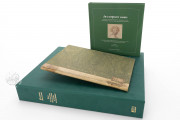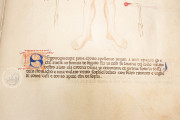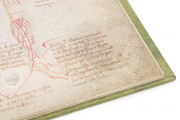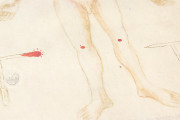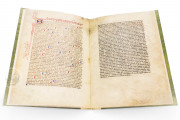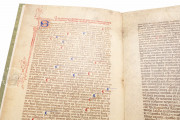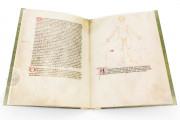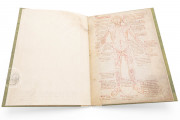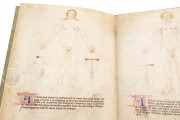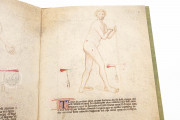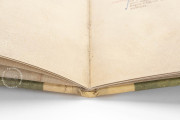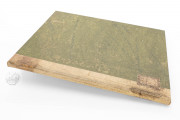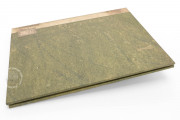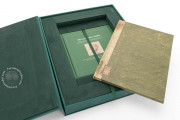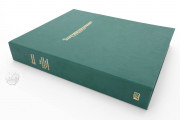Restored within the framework of the project “Save a Manuscript” for the 43rd Congress of the International Society for the History of Medicine, chaired by Professor Giorgio Zanchin and held in Padua on 12 - 16 September 2012, the Libro de le experiençe che fa el cauterio del fuocho ne corpi umani by Bartolomeo Squarcialupi, a Paduan physician, is preserved at the “Vincenzo Pinali” Medical Library in Padua.
An Intriguing Medical Treatise
It is a fascinating medical and surgical treatise that describes the practice of cauterisation, i.e. the application of hot irons (cauteries) on body parts presenting a wide range of diseases. The text is written in ancient Italian with Venetian elements, in the wake of other famous manuscripts that were produced in Padua under the rule of the Carraresi family during the late 14th and early 15th Centuries.
The drawings in this work are equally important and reveal that the unknown artist closely followed the Paduan pictorial tradition that was deeply influenced by Giotto.
The manuscript has been conventionally known as Libro or Trattato dei cauteri since 1908 when Giuseppe Albertotti published a first outline of it, referring to the title of the principal work mentioned on page 1v: Libro dele experience che fa el cauterio del fuocho ne corpi humani.
A Patchwork of Medicine
The current structure of the manuscript is an assemblage produced most likely in the 1800s by piecing together the remains of a large codex. The intention was evidently to create a work that was apparently “complete”; hence, it is possibile that loose pages were placed near text and illustrations presenting similar contents.
The manuscript contains three medical texts, all in vernacular Italian, with linguistic forms that can be traced to late 14th Century and early 15th Century Venetian, with the exception of the text contained on page 2rv, which seems to have Tuscan traits.
Binding description
Folder-like cover presumably made in the 19th century. Cardboard boards in parchment. Boards lined with green laid paper.
We have 1 facsimile edition of the manuscript "Bartolomeo Squarcialupi - Libro de cauteri": Libro del cauterio facsimile edition, published by Nova Charta, 2012
Request Info / Price

